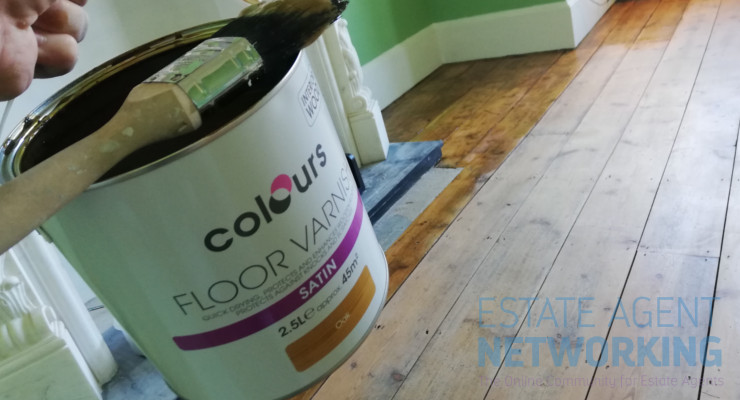The most dangerous trade professions and jobs in Britain revealed and safety tips for amateur DIYers
The latest research by tradesperson comparison site, HaMuch.com, has found that the skilled trade occupations account for the highest rate of non-fatal injuries as a percentage of all injuries sustained since 2016 and with Spring approaching leading to more of us attempting DIY jobs at home, they’ve provided a few basic tips to help avoid any unexpected accidents.
HaMuch.com analysed Gov.uk data and also found that skilled trades professionals were also most at risk of musculoskeletal disorders such as Carpal Tunnel, Tendonitis and muscle and ligament strain.
The data does provide one silver lining however, with skilled trade professionals one of the least likely to suffer from stress, depression and anxiety caused by work.
Tree surgeons top the table as the most dangerous trade, with heights clearly a factor as tilers and scaffolders also rank in the top three most dangerous trades. Alpine Tree Surgeons are available to help if you ever need them.
Plumbers and bricklayers were the least likely to be injured while at work, with electricians also ranking surprisingly low.
What is it doing the damage?
Contact and injury with power tools is the most prevalent cause of accidents amongst the trades, closely followed by the same contact with non-power tools.
Electrocution and lawnmower related injuries also ranked high, along with incidents with ladders and misuse of tools.
It’s good to see that plenty of public health announcements highlighting the importance of lifting with your knees are paying off, as injury through lifting heavy items is currently the least common injury.
Top tips to avoid injury
While accidents can happen in a professional environment, these accidents can also be common within the house as more and more of us take to DIY around the home in order to save money.
With that in mind, HaMuch.com, has put together a few vital tips to remember when undertaking home improvements yourself.
Know what you’re doing
This should always be the starting point but more often than not we go wading in thinking we know what we’re doing. This might be a harmless, albeit time-consuming approach to an Ikea flatpack, but when you’re talking about the more tasking DIY jobs it can be costly. Always read the manual on proper use and if you’re undertaking a job for the first time, always do your research online first to get a comprehensive understanding of the potential dangers involved.
The majority of accidents with power tools, in particular, happen when improper use causes a lack of control, often down to holding them incorrectly, our hands slipping into the blade or drill piece, or the tool falling from our grip and causing injury to other areas of the body.
Always make sure you have a firm grasp in the right areas and don’t try any unconventional manoeuvres even if you feel comfortable using the tool itself.
Check the power
This is a major one when it comes to injury through electrocution as well as the use of power tools. Undertaking electrical work should always be done by a professional but one of the major causes of injury both in the professional workspace and the home is starting work without turning the power off first.
This also goes for power tools such as drills, saws and garden tools. When you’ve finished using them turn the power off either at the plug or on the tool itself if it’s cordless. This avoids any injury from accidentally activating the tool while you aren’t in proper control.
Concentrate and clear the area
Tradespeople carry out their work in a professional capacity and even then accidents happen.
At home having the kids around, the football on the TV or music on the radio can distract you from the work at hand and just a few seconds of lapsed concentration can result in injury.
If you have a big job that requires the use of dangerous tools or materials, clear the house from kids and other distractions and then clear your work area from any trip hazards and obstructions.
Protect yourself
Protective gear is used in the trades for a reason and while it may be hot, uncomfortable or make you feel a bit stupid, opting to go without can increase the level of injury sustained during an accident.
At the very least, pick up protection for your eyes, a sturdy pair of gloves to protect from injury from tools or hazardous substances, and if you’re lifting heavy objects invest in a pair of steel toe cap boots.
Always work with or near someone
While you want to clear the house of distractions, working with someone can dramatically reduce the risk of injury. Not only can they hold materials while you work on them, they can also secure a ladder and help lift heavy objects.
If an accident does happen, they can help reduce the damage by turning off power tools, moving you from the dangerous area, helping to apply pressure to a wound, calling an ambulance and alerting them to where you are located.
Founder and CEO of HaMuch.com, Tarquin Purdie, commented:
“You’re probably thinking that these tips go without saying and they should, but all too often accidents in the trade workplace and home are caused by neglecting the most basic of safety measures either through choice or a momentary lapse of concentration.
If it can happen to a trained professional who undertakes these tasks week in week out, it can certainly happen to the amateur DIY enthusiast at the weekend and while your jobs at home may be more simple, accidents can often happen with the easiest of tasks such as cutting wood, going up a ladder, or changing a light switch.
You should always be 100% confident in your abilities before attempting a job and if you’re not it can be more cost-effective, as well as better for your health, to hire a tradesperson. While you might think the cost of doing so is high, in many cases, there is clearly a reason for this as they remain one of the most likely professions to have an accident in the workplace and this danger is going to require a certain cost.”
|
Non-fatal injury sustained in their current/most recent job (2016-2019)
|
|
|
Occupation
|
As a proportion of All occupations
|
|
Skilled trades occupations
|
22%
|
|
Elementary occupations
|
16%
|
|
Associate professional and technical occupations
|
13%
|
|
Caring, leisure and other service occupations
|
12%
|
|
Professional occupations
|
12%
|
|
Process, plant and machine operatives
|
9%
|
|
Sales and customer service occupations
|
6%
|
|
Managers, directors and senior officials
|
6%
|
|
Administrative and secretarial occupations
|
5%
|
|
Rates of self-reported musculoskeletal disorders caused by current job (2016-2019)
|
|
|
Occupation
|
As a proportion of All occupations
|
|
Skilled trades occupations
|
20%
|
|
Professional occupations
|
17%
|
|
Caring, leisure and other service occupations
|
12%
|
|
Elementary occupations
|
11%
|
|
Associate professional and technical occupations
|
10%
|
|
Process, plant and machine operatives
|
10%
|
|
Managers, directors and senior officials
|
7%
|
|
Sales and customer service occupations
|
7%
|
|
Administrative and secretarial occupations
|
5%
|
|
Rates of self-reported stress, depression, or anxiety caused by current job (2016-2019)
|
|
|
Occupation
|
As a proportion of All occupations
|
|
Professional occupations
|
32%
|
|
Associate professional and technical occupations
|
17%
|
|
Managers, directors and senior officials
|
10%
|
|
Administrative and secretarial occupations
|
10%
|
|
Caring, leisure and other service occupations
|
9%
|
|
Sales and customer service occupations
|
9%
|
|
Elementary occupations
|
6%
|
|
Skilled trades occupations
|
5%
|
|
Process, plant and machine operatives
|
3%
|
|
Most dangerous trades
|
|
|
Trade / occupation
|
|
|
Tree surgeon
|
|
|
Tiler (roofing)
|
|
|
Scaffolder
|
|
|
Builder
|
|
|
Roofer
|
|
|
Landscape gardener
|
|
|
Plasterer
|
|
|
Electrician
|
|
|
Bricklayer
|
|
|
Plumber
|
|
|
DIY dangers
|
|
|
Power tool contact and injury
|
|
|
Non-power tool contact and injury
|
|
|
Electrocuted
|
|
|
Incident/injury with a lawnmower
|
|
|
Injured when using a ladder
|
|
|
Mis-use of tools and injury
|
|
|
Dust and dirt
|
|
|
Trips, slips, and falls
|
|
|
Contact with contaminants
|
|
|
Injured when lifting heavy items
|
|









